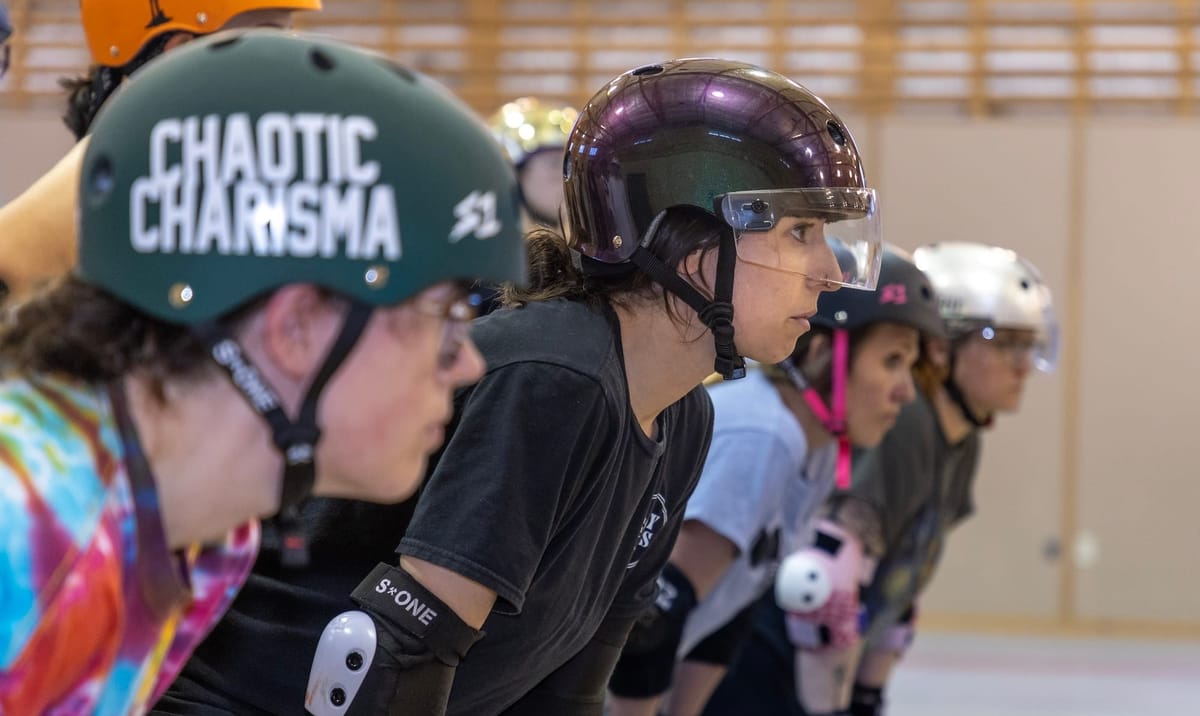Hidden in plain sight: Ernest Trova’s 'GOX #4'
This installment in an ongoing series about the City of Wichita's public art collection examines a 1975 steel sculpture that suggests a solitary, fragmented future.
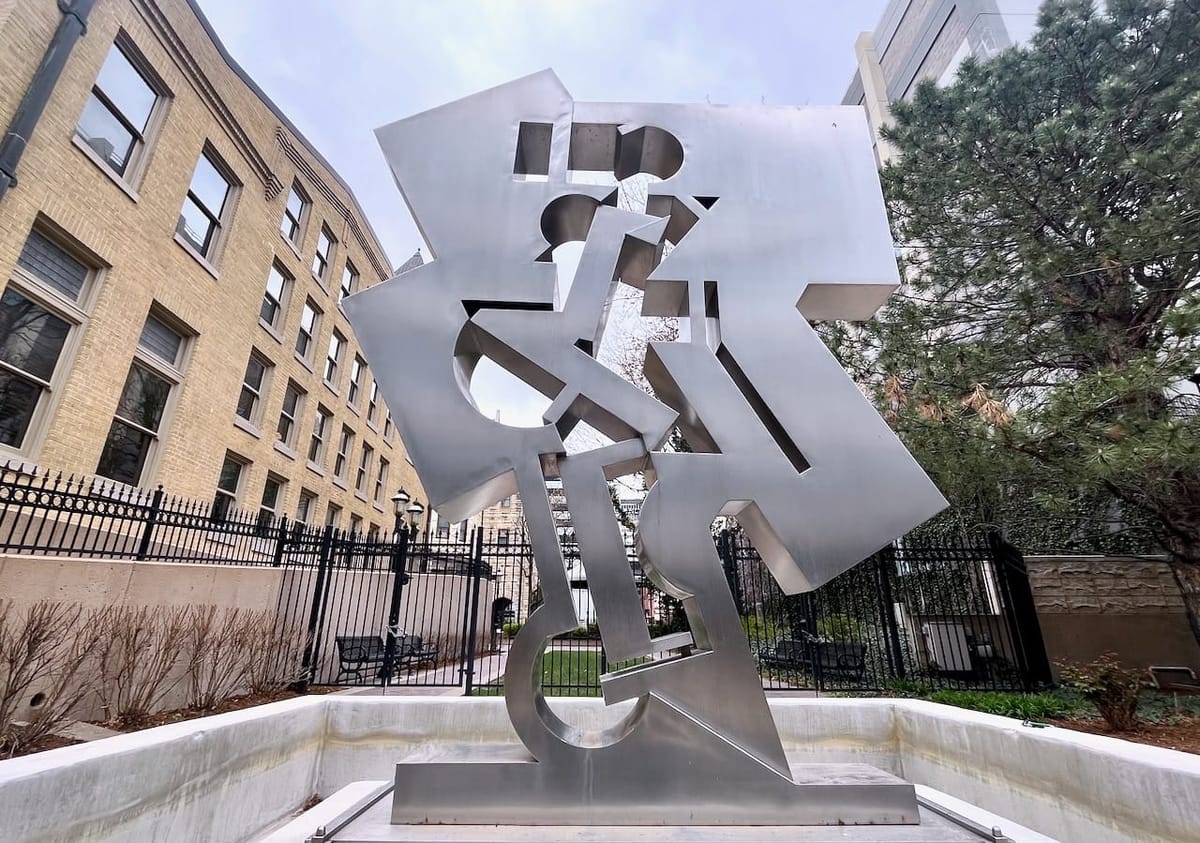
“GOX #4,” Ernest Trova’s gleaming stainless steel sculpture, measures about 9 feet high, 6 feet wide, and over 2 feet in width. Still, drivers on nearby Main Street won’t catch a glimpse of it, even though it’s located a few yards away, between East William and East English Streets. “Hidden gem” may be an overused term, but it’s a phrase that applies to the four sculptures hosted at Heritage Square Park.
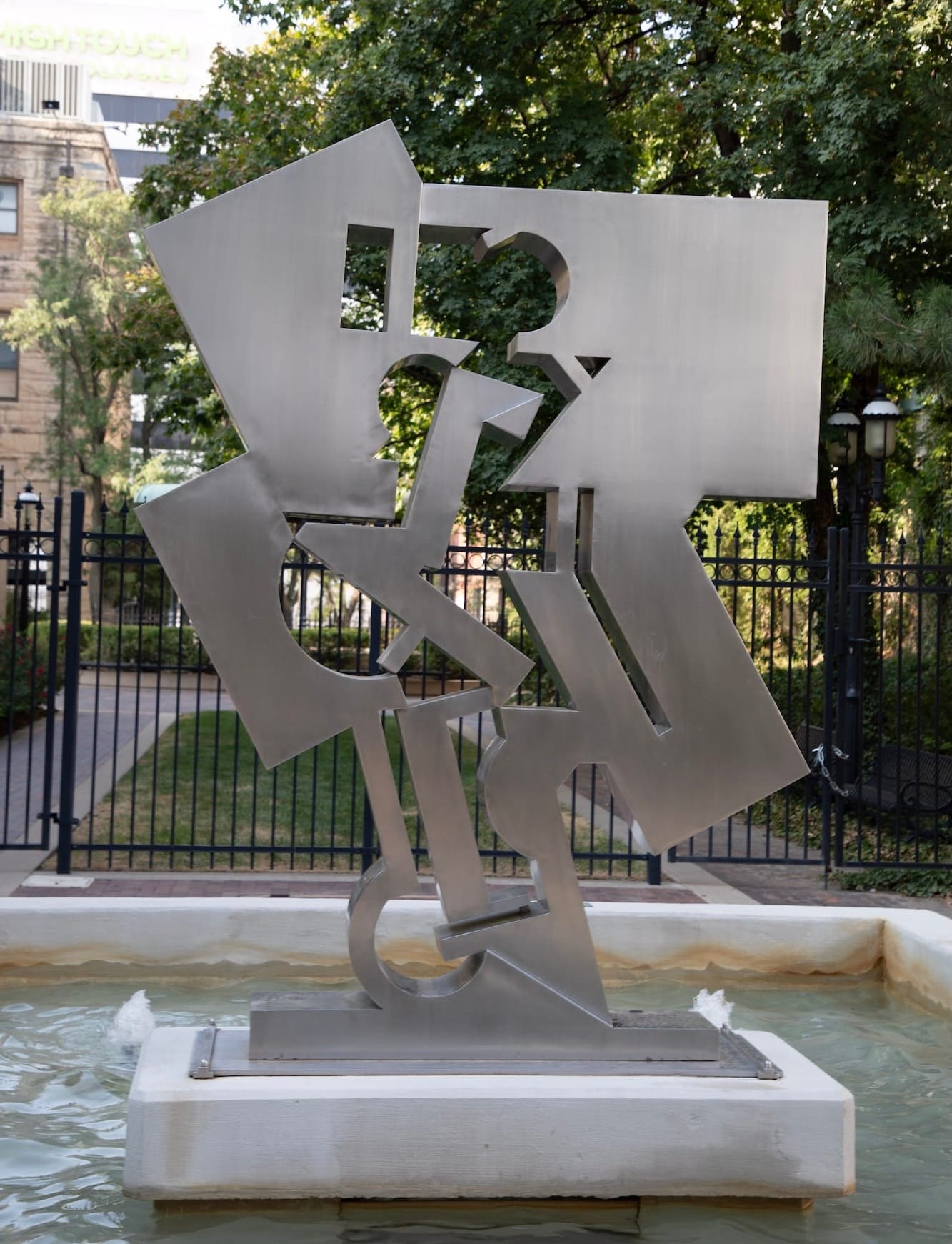
Heritage Square, a charming pocket park nestled between and behind the Wichita-Sedgwick County Historical Museum, the Carnegie Library, and the Fidelity Bank building, features a large copper-roofed gazebo, numerous picnic tables, and a free-form rock fountain pool. The park serves as a venue for museum-hosted concerts and celebrations. The bonus for art lovers is the park’s collection of sculptures in a variety of media, all of which are part of the City of Wichita's public art collection.
Three other sculptures from the city's collection populate Heritage Square: Richard Bergen’s classically styled “Heritage Woman” in bronze presides over the pool, and local artist David Mast’s hand-carved limestone sculpture of an Assyrian lion, “Righteousness Restored,” prowls near Gary Lee Price’s towering bronze “Journeys of the Imagination.”

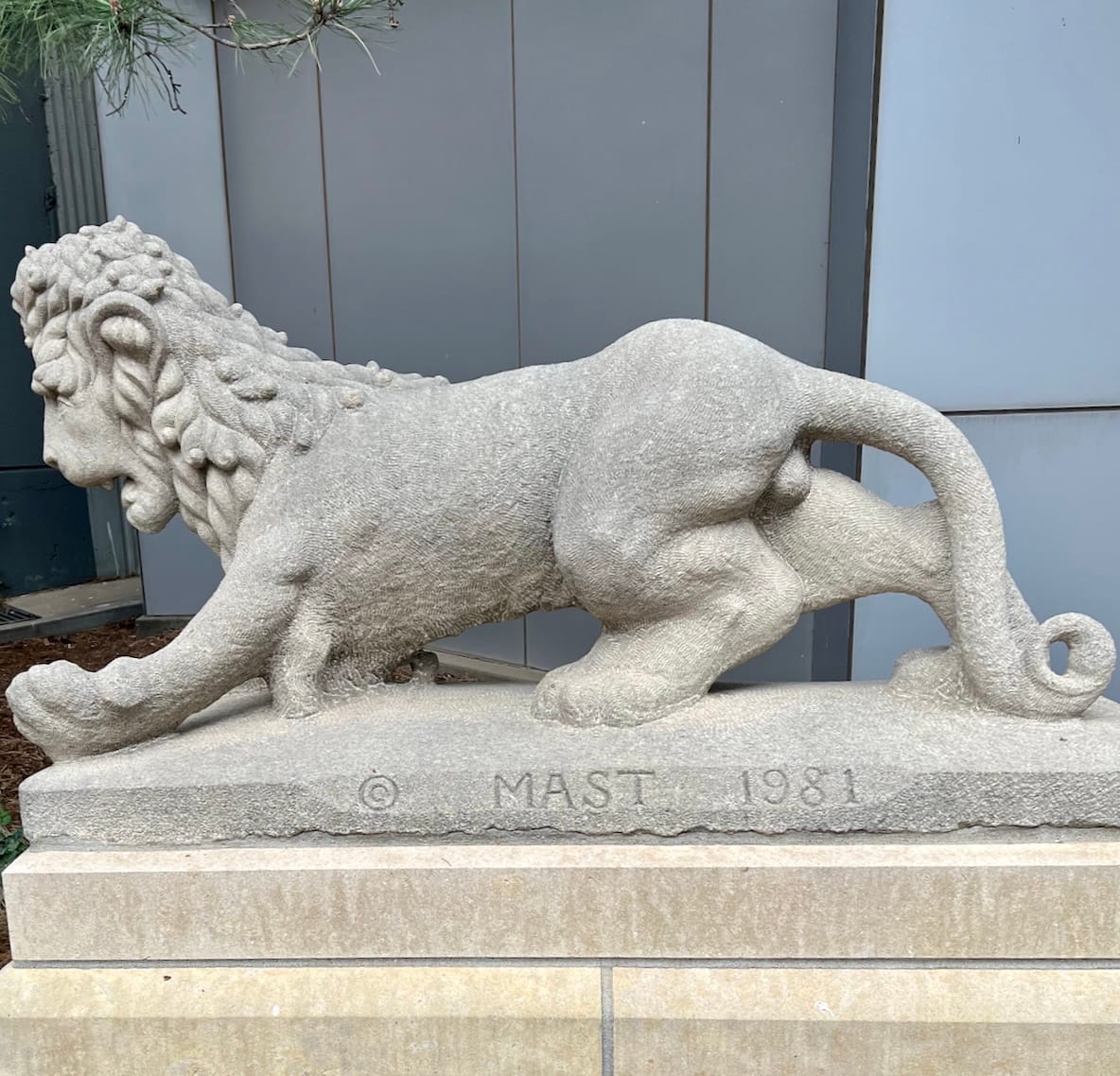
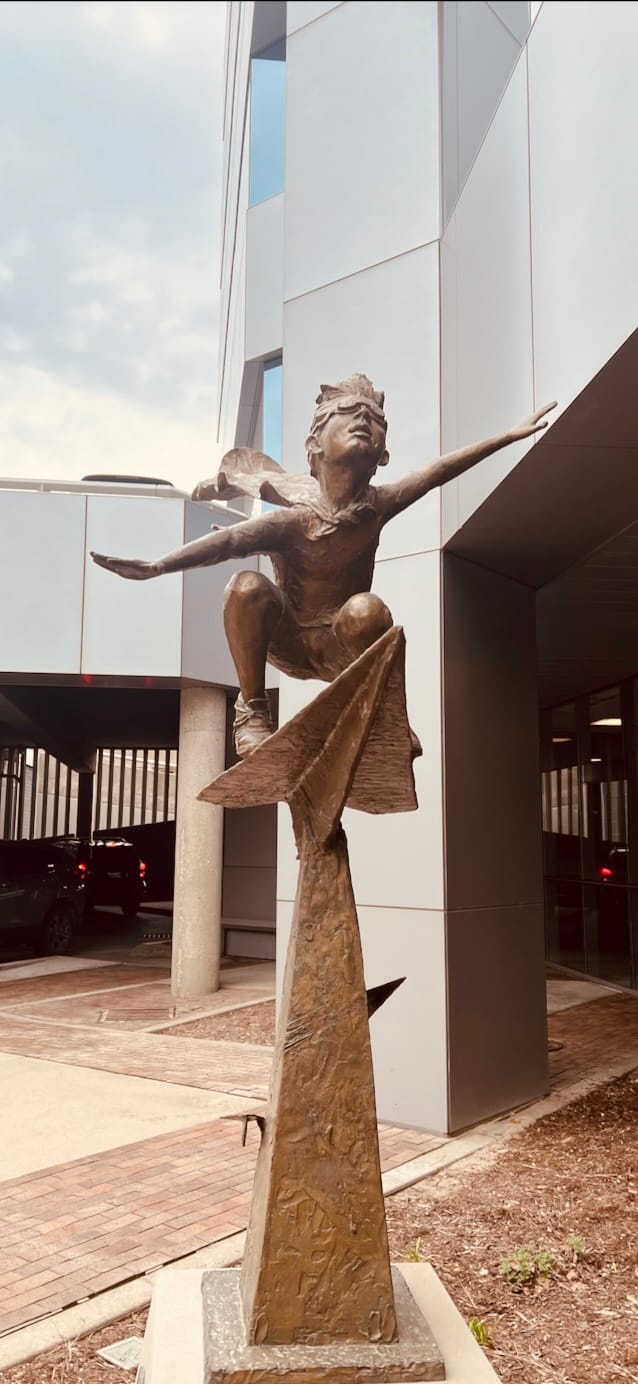
From left: Richard Bergen, "Heritage Woman," bronze, 1976; David Mast, "Righteousness Restored," limestone, 1981; Gary Lee Price, "Journeys of the Imagination." The first photo is courtesy of the City of Wichita Public Art Collection; others are by Skyler Lovelace for the SHOUT.
“GOX #4” is anchored in its own custom concrete fountain. One work in Trova’s “Falling Man” series, it is meant to be viewed straight-on. It’s one of Trova’s most abstracted representations of his famous everyman figure. Massive, polished metal rectangles angle wildly askew to form the body of the sculpture. The viewer discovers hints of a human figure in the negative-space cutouts: A straight leg and foot anchored near the base, a torso precariously angled in the midsection, and a round circular shape of a head near the top.

The title derives from Trova’s series of “GeOmetric eXercises.” In the interplay between the solid forms and the empty spaces of the GOX series, Trova seems to be exploring the transient nature of the human condition — a persistent theme in his work. Characteristically, the GOX sculpture series incorporates arches, squares, and rectangles cut into metal blocks. According to the guides of the St. Louis Laumeier Sculpture Park, Trova “considered his entire output a single ‘work in progress.’” In that context, the GOX series represents a geometric, angular puzzle, one of the many expressions of Trova’s “Falling Man.” In “GOX #4,” humanity’s future is solitary, fragmented, and trapped.
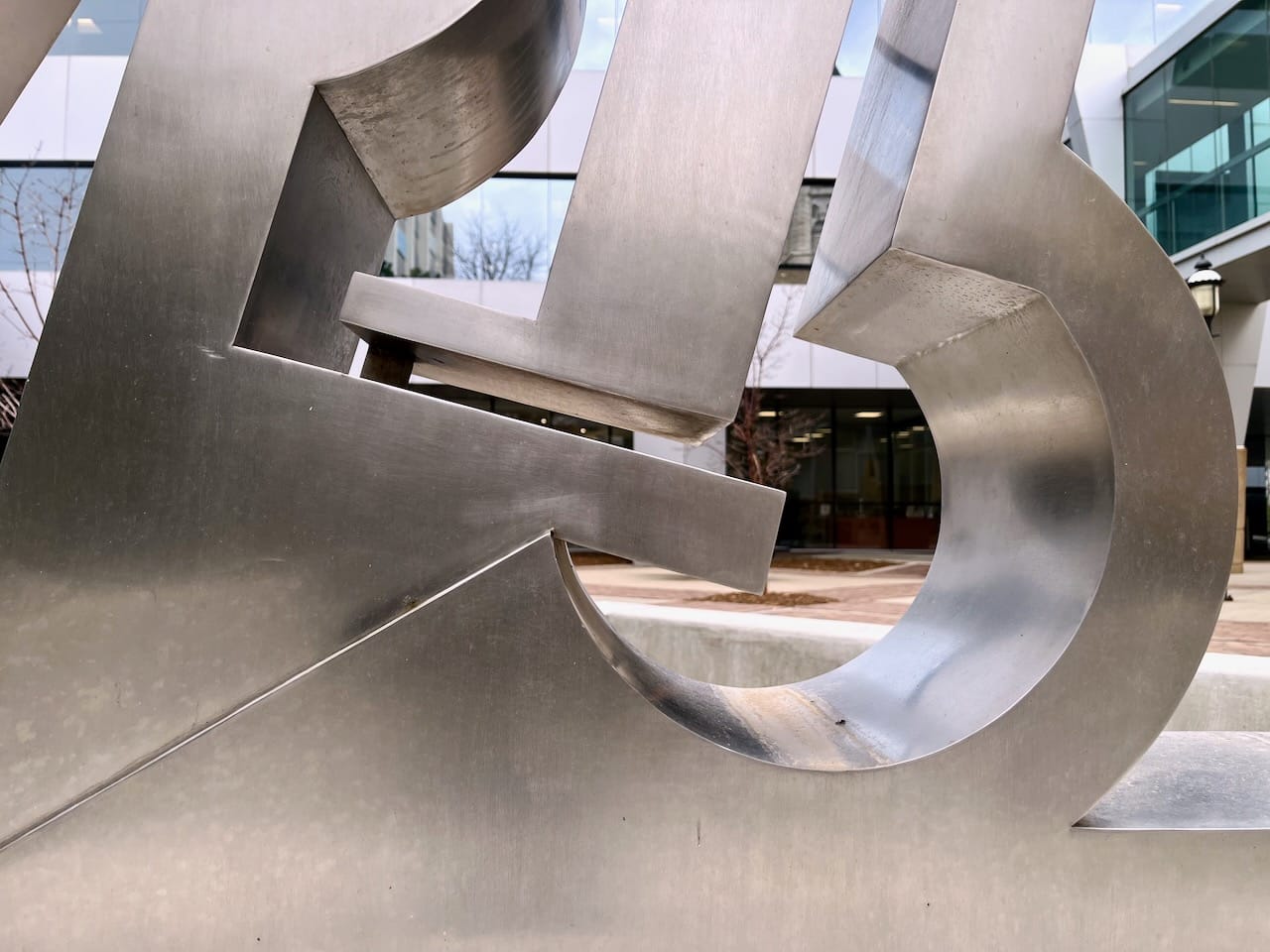
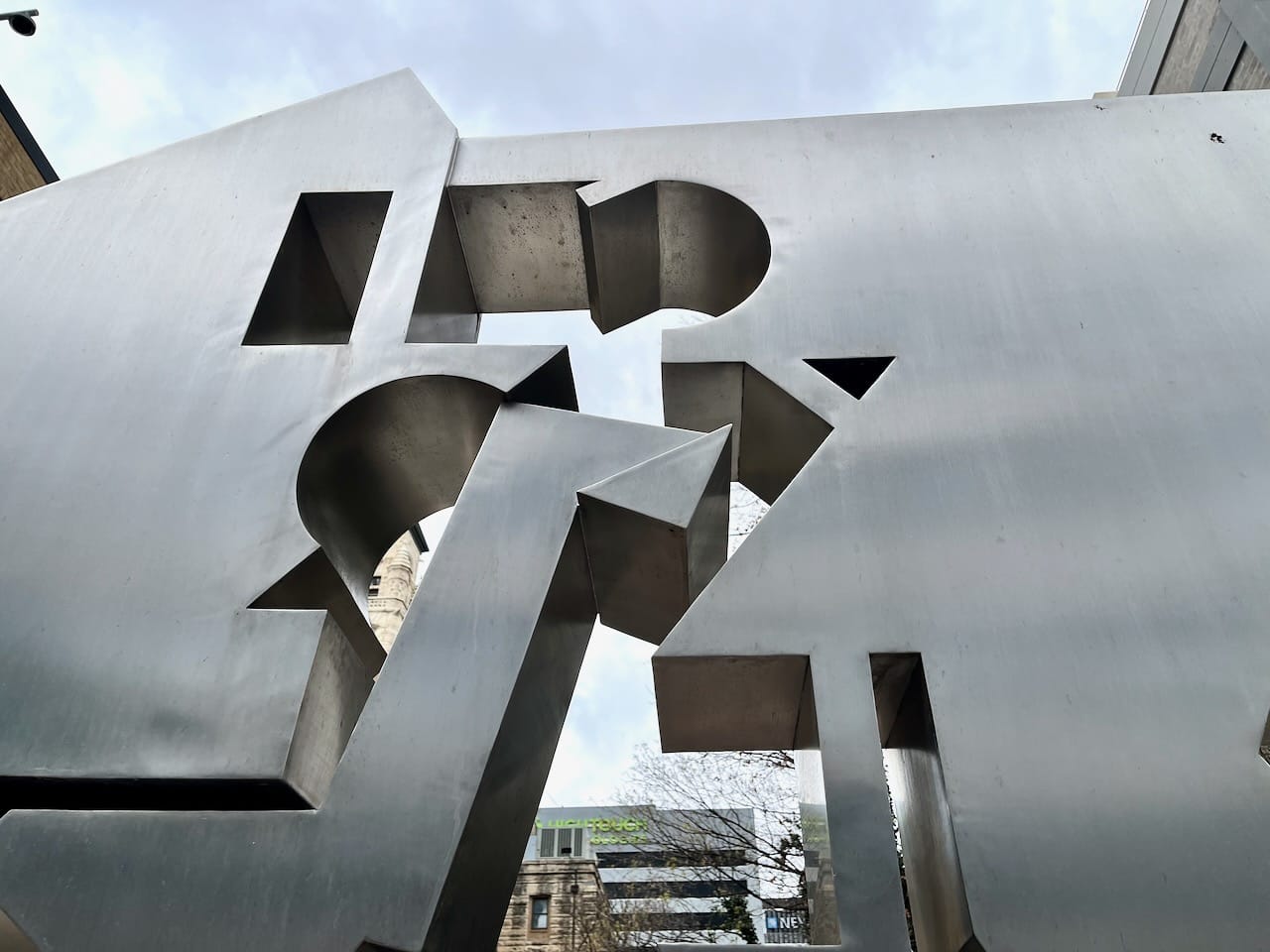
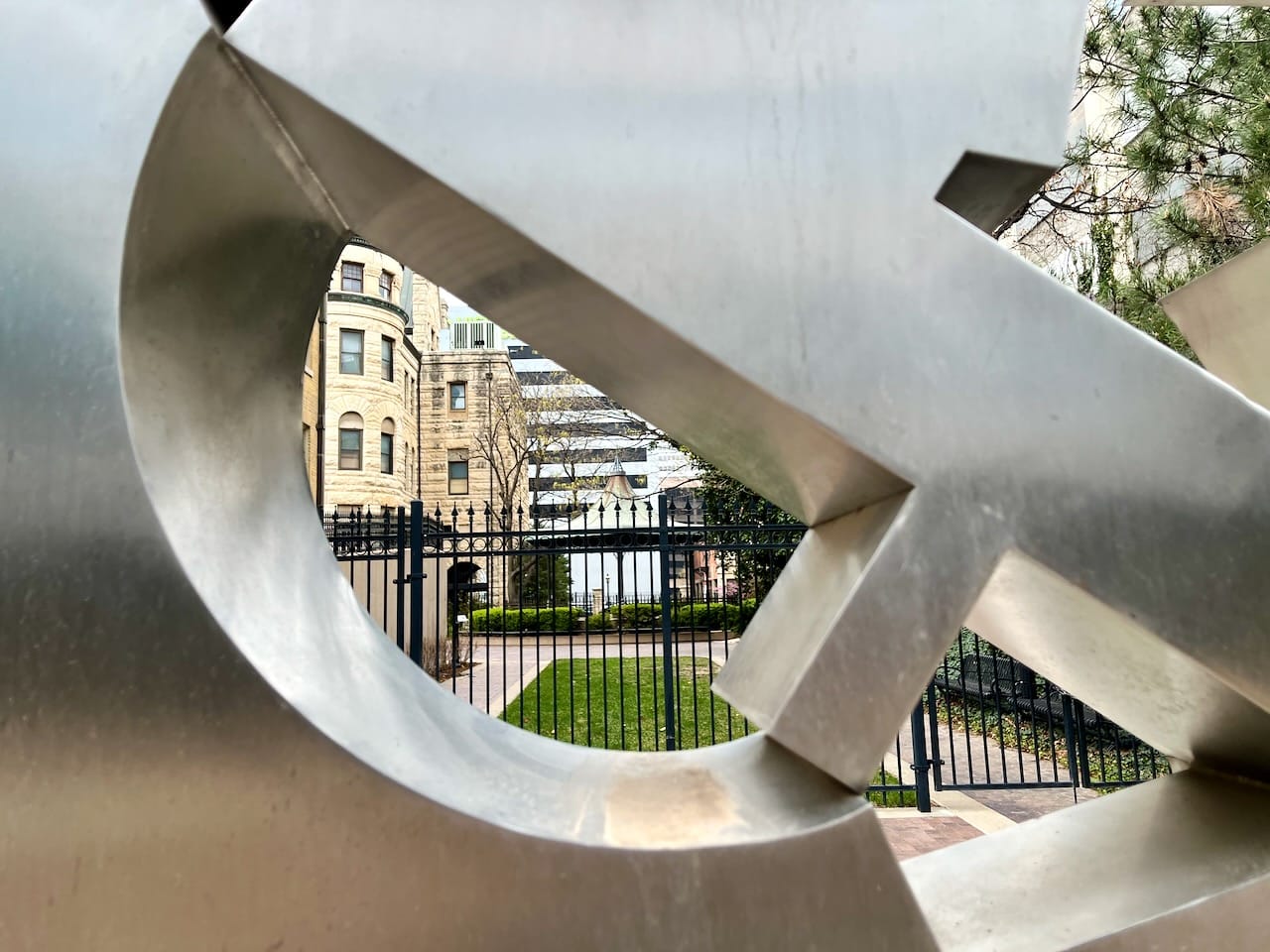
You can locate fragments of a human form in "Gox #4." Photos by Emily Christensen for the SHOUT.
Trova reiterated his “Falling Man” in many media. The motif began life as a painted silhouette. Trova’s New York Times obituary described the persistent figure this way: “Faceless, armless, with a hint of a belly and, its name notwithstanding, of indeterminate sex, the figure struck a variety of poses, sometimes juxtaposed with other like figures, sometimes with mechanical appendages.” The strange little figure struck a nerve in the art world: Trova’s 1963 one-man show “Falling Man” in New York’s Pace Gallery sold out. Buyers included the Museum of Modern Art, the Whitney Museum, and notable private collectors.
Although not currently on view in their galleries, Trova’s 21-by-21-inch serigraph “Falling Man on ‘70” can be viewed online at the Wichita Art Museum’s website. It’s representative of the two-dimensional appearance of the Trova figure. Here we see a typical profile view of Trova’s signature standing figure, repeated around a centering circle. On its own, it’s iconic Pop Art. Within the context of Trova’s many iterations of the Falling Man, it represents one of Trova’s hypnotic meditations on the multiplicity and anonymity of modern humanity.
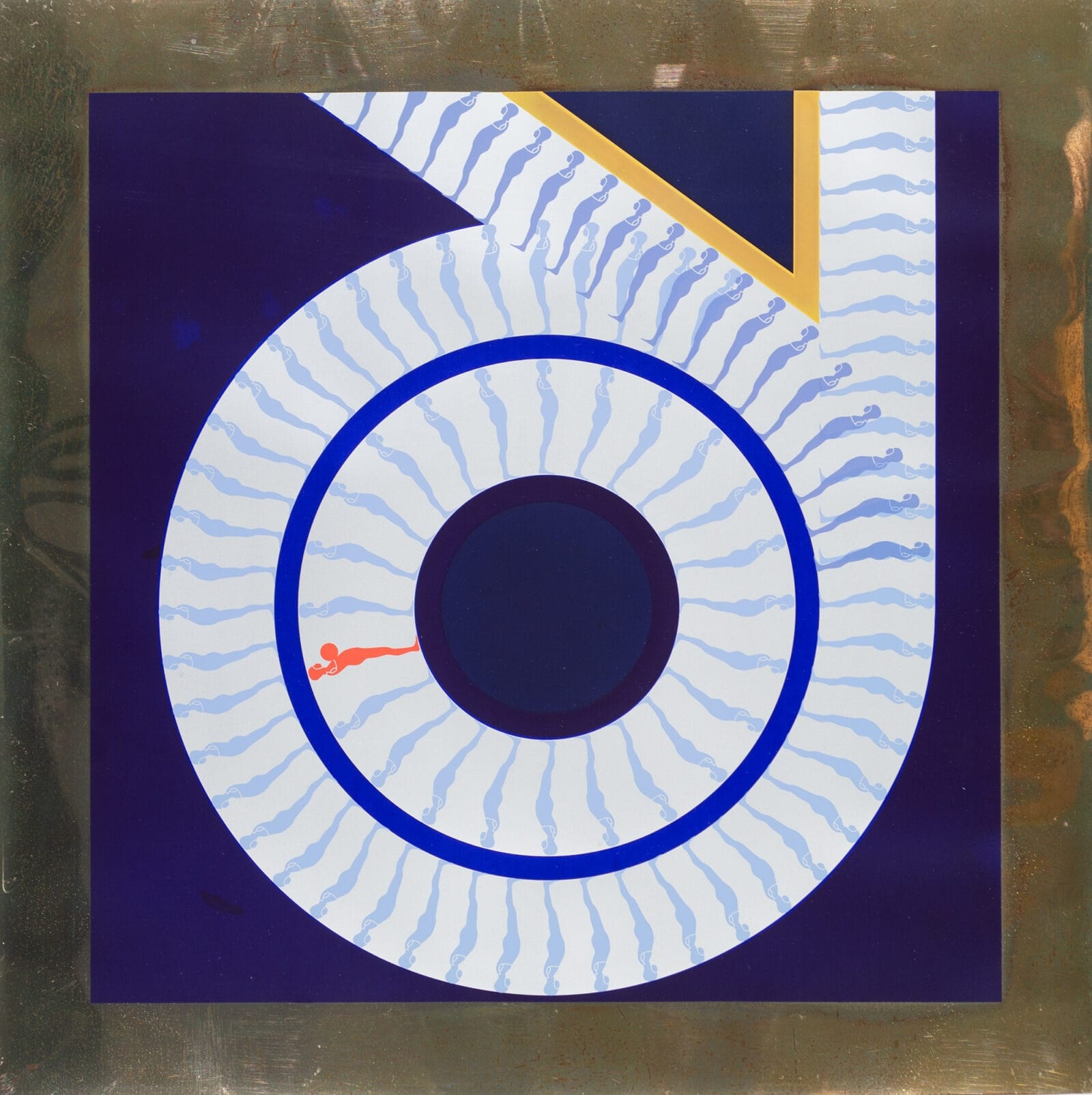
Throughout the 1970s and 1980s, Trova continued to present his enigmatic figure in two and three dimensions, as paintings and sculpted in bronze, steel, and aluminum. Wichita’s massive stainless steel “GOX #4” is a particularly fine example of Trova’s “GeOmetric eXercises” series.
St. Louis-born and self-trained, Ernest Trova (1927-2009) is regarded as a significant artist of the twentieth century largely on the basis of his “Falling Man” series. Trova’s work experience included an early career as a department store window display designer, and some biographers suggest that his work with store mannequins led directly to his development of the “Falling Man” series.
Subscribe to our free email newsletters
Stay in the know about Wichita's arts and culture scene with our Sunday news digest and Thursday events rundown.
No spam. Unsubscribe anytime.
Trova’s interests and influences were wide and varied. His artistic mentors included abstract expressionist Willem de Kooning and poet Ezra Pound. He was an enthusiastic toy collector who particularly admired Walt Disney. In the '60s, Trova produced a number of Mickey Mouse-themed serigraphs.
Trova famously donated many of his works to cities and universities. His gift of 40 sculptures established St. Louis’ Laumeier Sculpture Park in 1976. Locally, Trova fans can find several of his works on the Wichita State campus, including “Profile Canto IV-A,” a 12-foot-tall structure of Cor-Ten steel. Careful viewers may find in it elements of the “Falling Man.” Or, even more provocatively, the rounded outline of the ears of a very famous mouse.
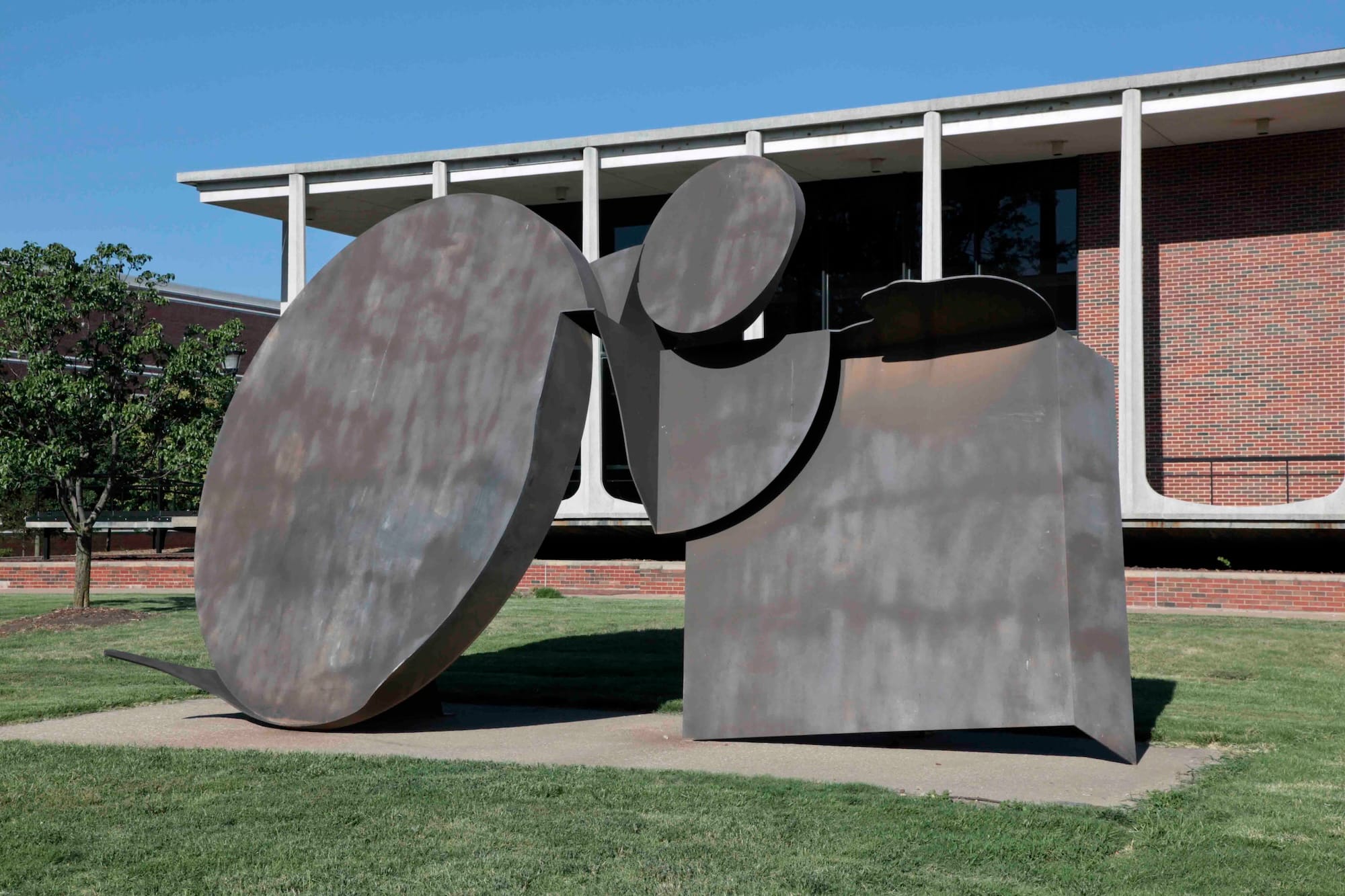
The Details
Heritage Square Park, 115 E. William St. in downtown Wichita, is open during the Wichita-Sedgwick County Historical Museum's regular hours: 11 a.m.-4 p.m. Tuesday-Friday and 1-5 p.m. Saturday and Sunday.
Learn more about Heritage Square Park from the Wichita-Sedgwick County Historical Museum and the City of Wichita websites. You can also view many of the objects in the city's public art collection online through the Public Art Archive.
This piece is part of a series about the City of Wichita's public art collection. Read more about public art in the SHOUT.
Skyler Lovelace is a poet and painter from Wichita, Kansas. She works from a 1927 former elementary school, where she facilitates poetry workshops from the principal’s office and paints in an upstairs classroom.
⊛ What is 'percent for art?' About the public art funding program that Wichita art advocates don't want to lose
⊛ How a guy from Wichita resurrected 'Dawn of the Dead'
⊛ Painting through it: Autumn Noire on 20 years of making art
⊛ Canonizing Black American Life: Robert Peterson at the Wichita Art Museum
⊛ 'You don't have to give up': Clark Britton on making art into his 90s
The latest from the SHOUT
 The SHOUTSeth Bate
The SHOUTSeth Bate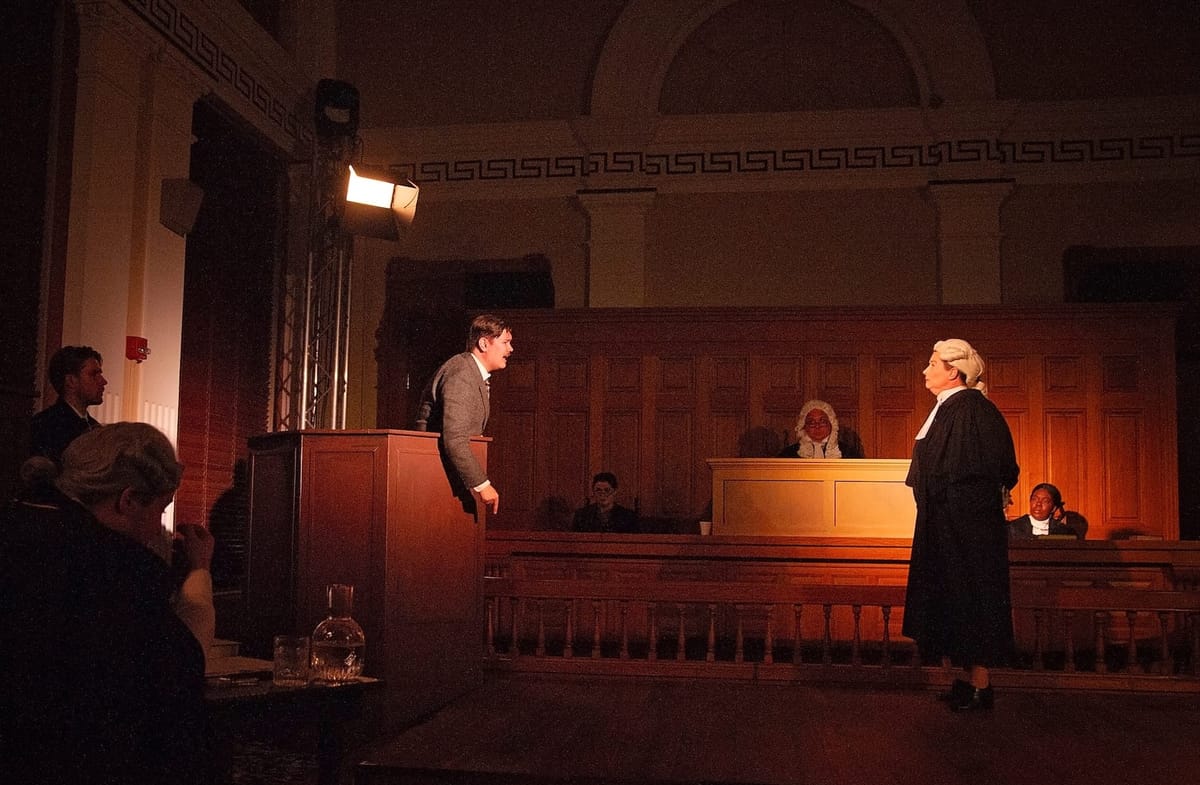
 The SHOUTKsenya Gurshtein
The SHOUTKsenya Gurshtein
 The SHOUTTrace Salzbrenner
The SHOUTTrace Salzbrenner
 The SHOUTShelly Walston
The SHOUTShelly Walston